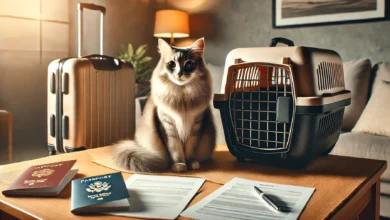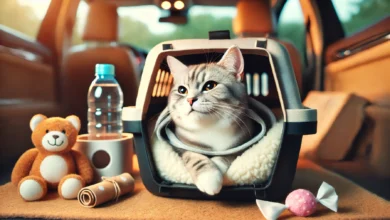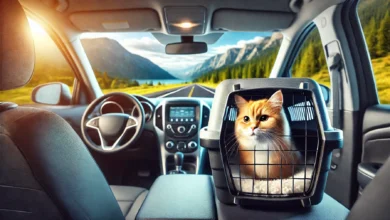Understanding Pet Passport Needs for Cats
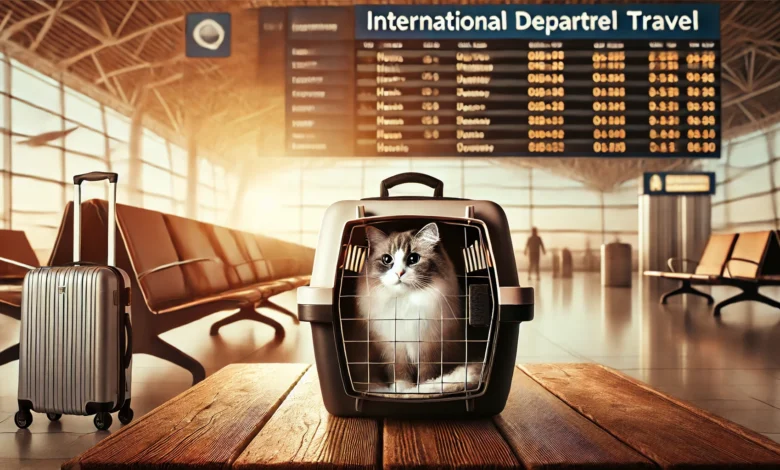
International travel with your cat can be quite an exciting adventure, but it also comes with particular challenges.
Probably topping the list of things to learn in preparation for your journey is the concept of a pet passport.
A pet passport is a document that allows your feline companion to move through borders while adhering to international pet regulations.
Whether for long-term relocation or even for a short vacation, ensuring proper documentation for your cat will save you from much stress and potential delays at the airport.
Table of Contents
What is a Pet Passport for Cats?
The pet passport that a veterinarian issues for a cat is an official document that allows your pet to cross borders.
This document records essential information about your cat’s health, vaccination details, and microchip information—all necessary to fulfill the requirements of different countries.
The pet passport essentially serves as proof that your cat is healthy and has met all the legal conditions for international travel.
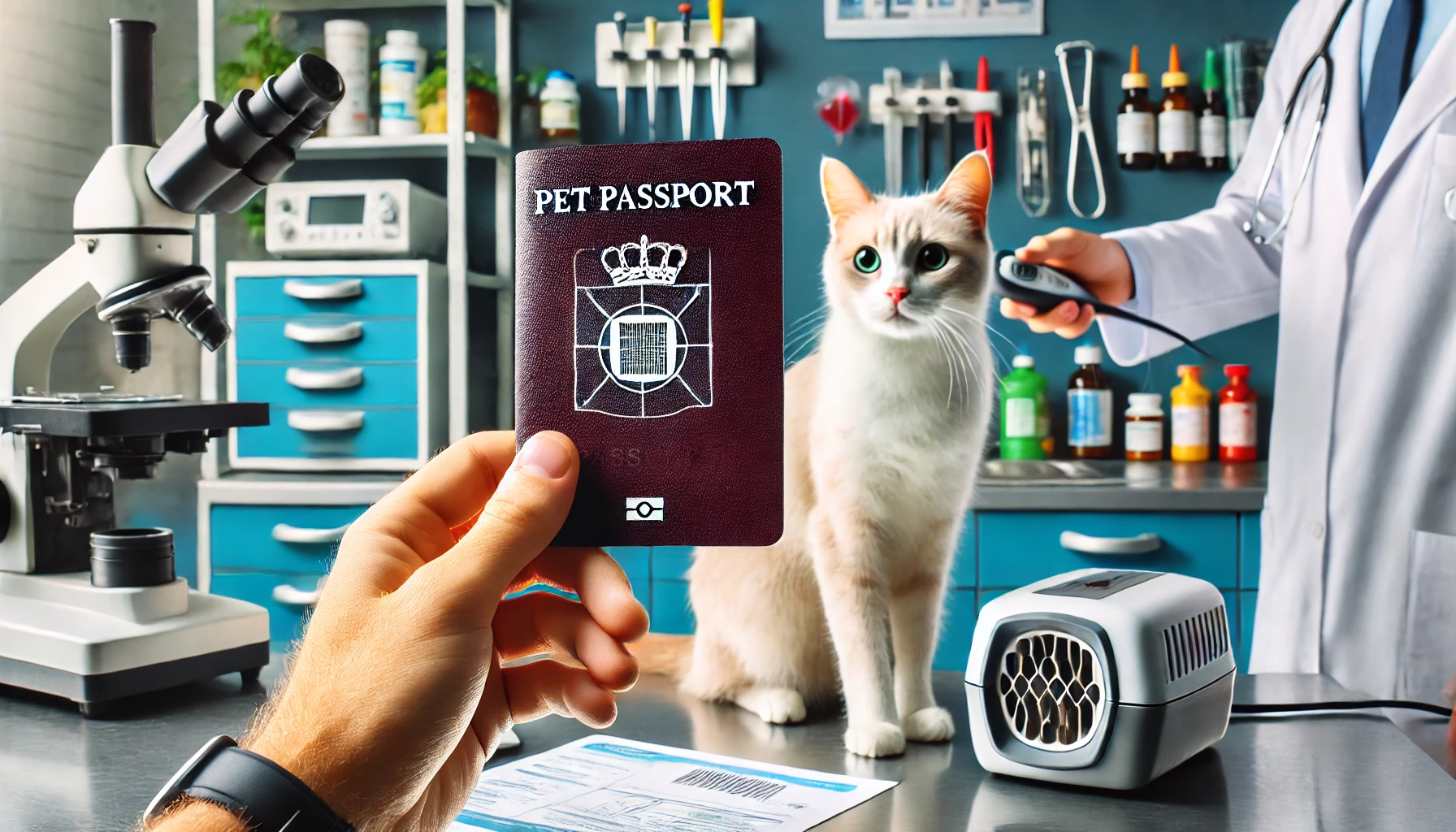
Overview of Pet Passports
Remember, a pet passport is not just a travel document but a comprehensive health record.
It includes the following important details:
- Your cat’s microchip number and the date of implantation
- Vaccination records, especially rabies vaccination
- Treatment records for parasites, such as tapeworm
- Your veterinarian’s contact information and certification
Many countries have strict entry requirements for pets.
If your cat’s passport is not in order, it could face quarantine or, in the worst case, denial of entry.
This makes obtaining a pet passport crucial for international travel with your cat.
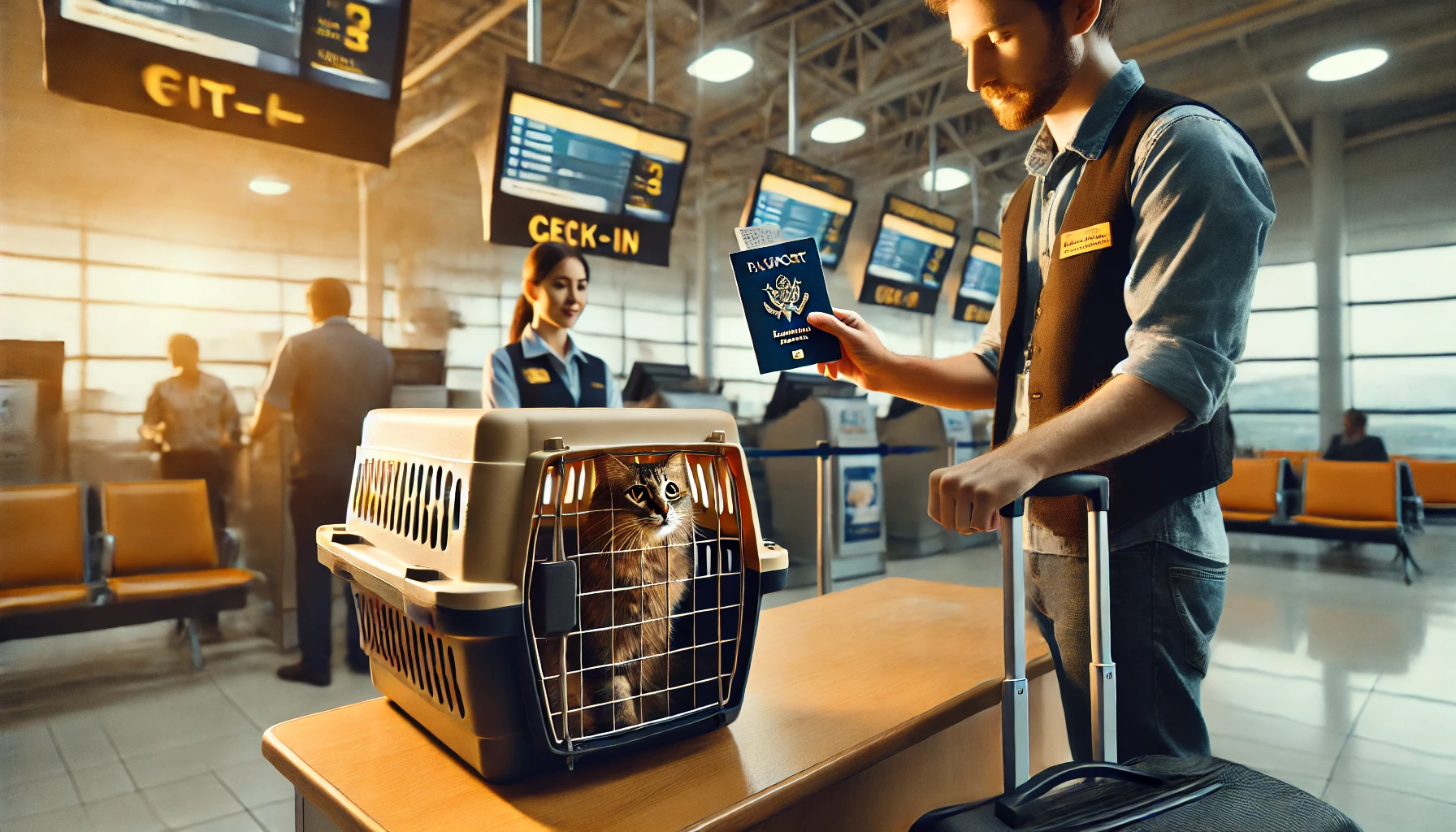
Why Your Cat Might Need One
If you’re wondering, ‘Does my cat really need a pet passport?’, the answer depends on your destination.
For trips to the European Union, a pet passport is required to cross borders with cats.
Outside of the EU, many countries have similar systems, though they may go by different names.
In these cases, a pet passport streamlines the process and ensures your cat complies with local laws.
Having a pet passport also facilitates the return process.
Should you need to return to your home country, your cat’s vaccinations and treatments will be up-to-date and documented in one place, making re-entry much smoother.
Additionally, most airlines require this documentation before allowing your pet to board.
A pet passport is an official document for cats that provides details about their health, vaccinations, and microchip, ensuring they can cross borders safely and legally.
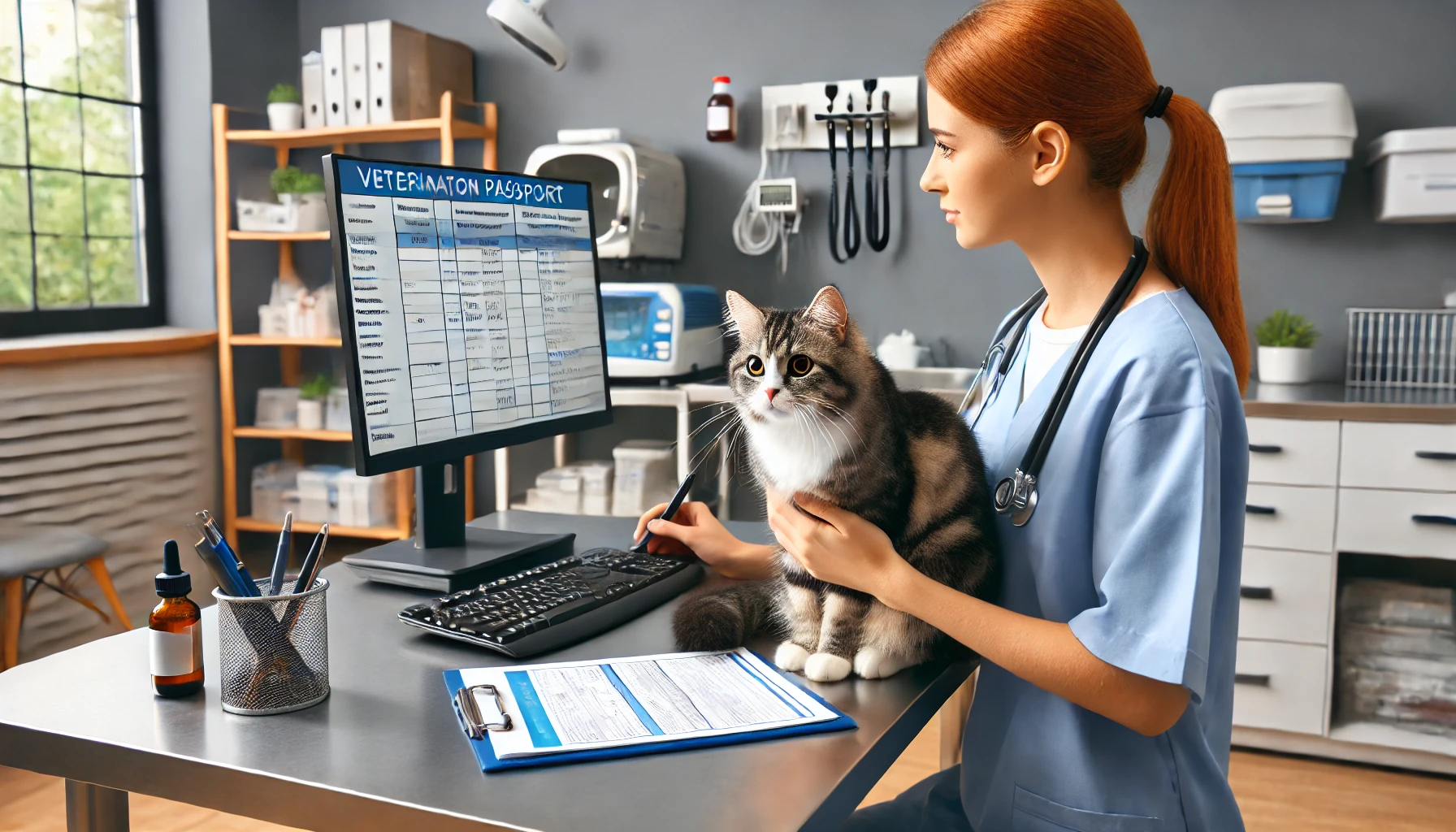
How to Obtain a Pet Passport for Your Cat
Getting your cat a pet passport involves a series of steps that ensure your feline friend will meet the required health and legal standards for travel overseas.
The process is quite simple, yet it is very important to start in time, as one may face serious delays.
Each country has its own rules and regulations; however, the general process follows the same pattern.
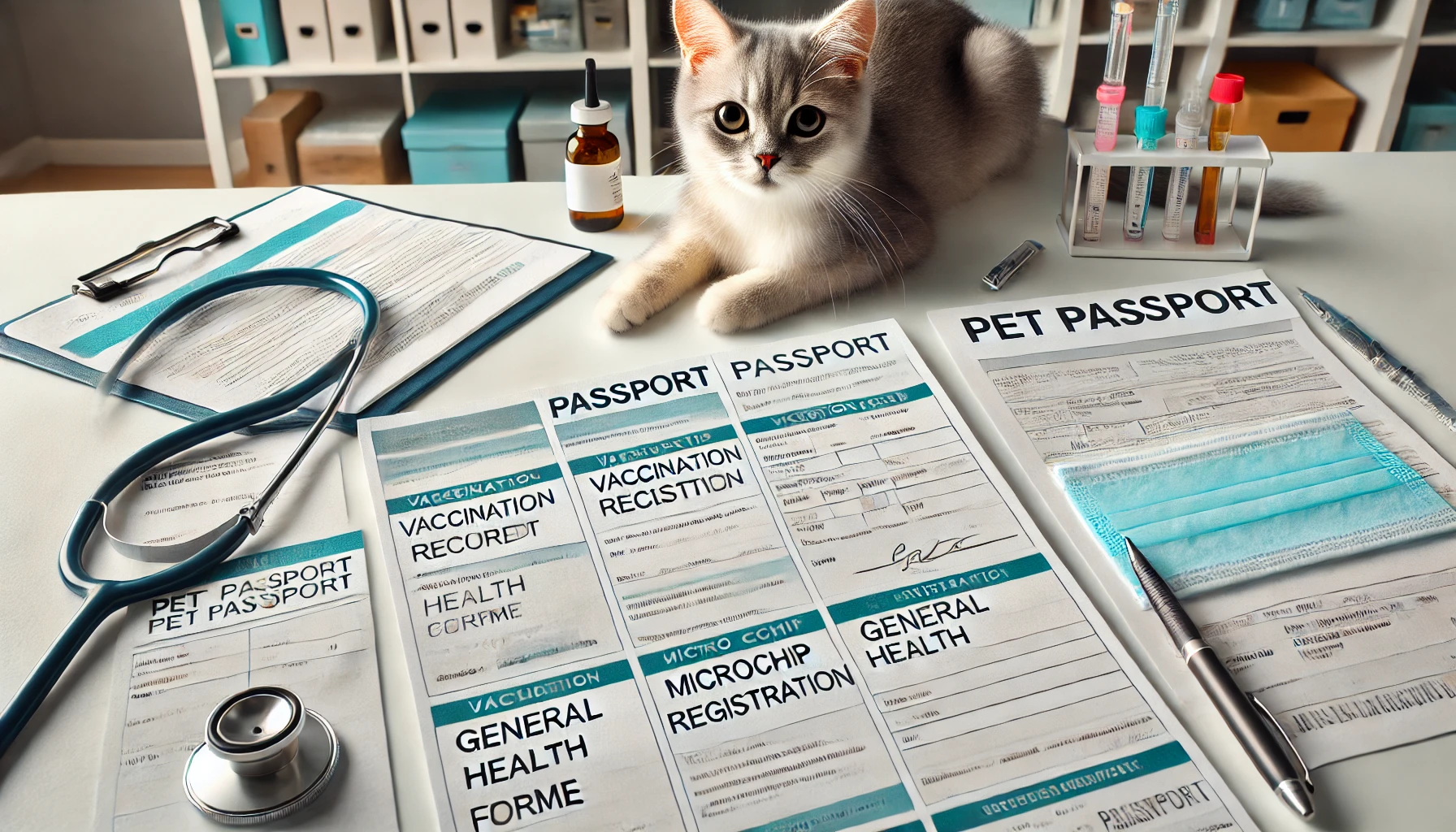
Required Documents
The first step towards getting a pet passport for your cat is gathering all the necessary documents.
These include:
- Your cat’s microchip details: For an international pet passport, your cat should be microchipped. It needs to be ISO standard 11784/11785 to be readable by scanners in different countries.
- Vaccination records: Most countries require proof of rabies vaccination. The vaccination is administered after the microchip is implanted and is generally valid for one year or longer, depending on the type of vaccine.
- Tapeworm treatment: Some countries require proof that your cat has received tapeworm treatment within a certain time frame before entry into their country.
- General health certificate: Provided by a licensed veterinarian, this document affirms that your cat is healthy enough to travel and does not carry any contagious diseases.
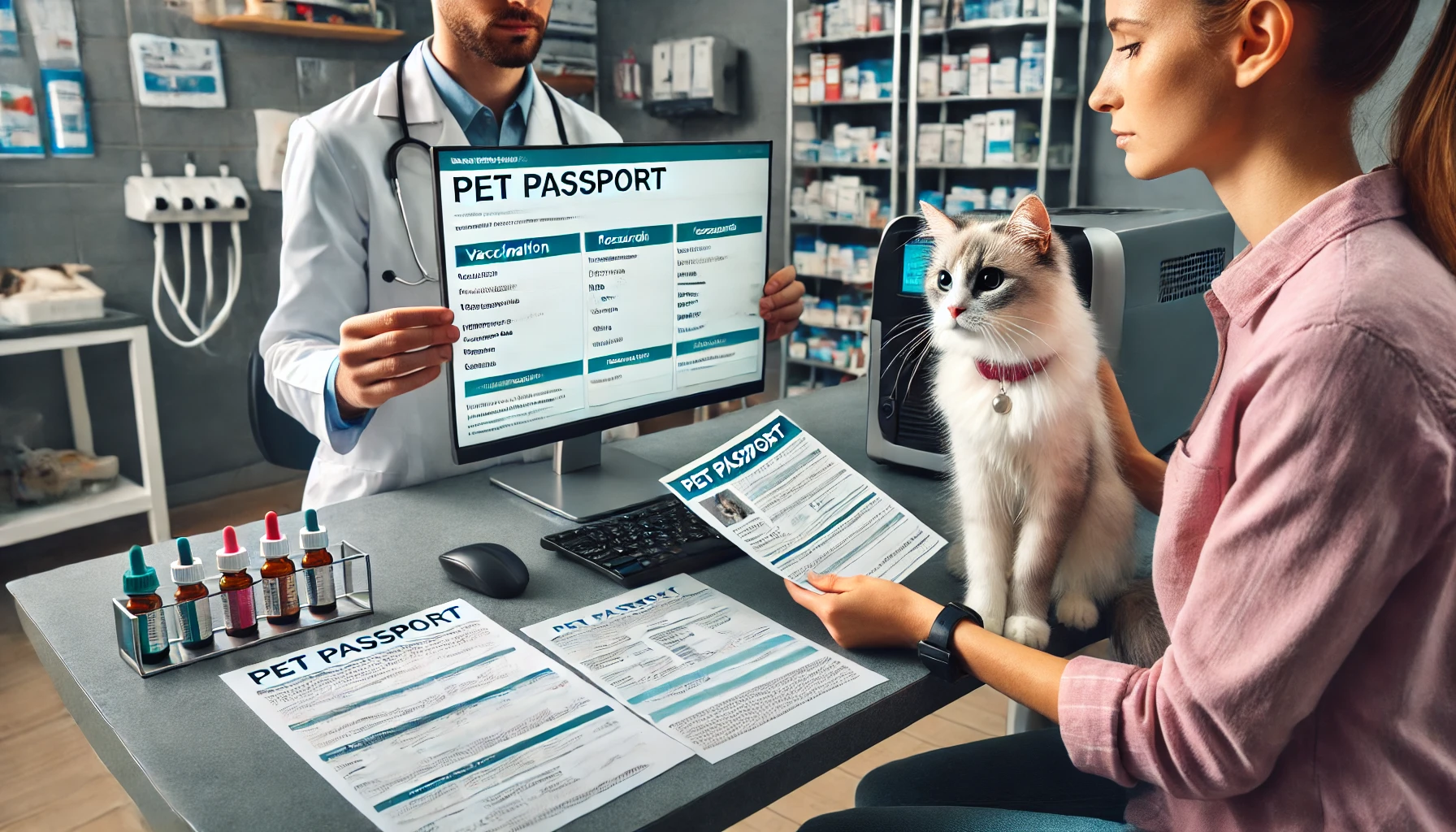
Application Process
Once you have gathered all the necessary documents, it’s time to visit an authorized veterinarian who is able to issue the pet passport.
The veterinarian will verify the microchip and vaccination records of your cat and perform any tests needed to confirm that your pet meets the specific health requirements of the country you are visiting.
Remember that not all veterinarians are permitted to issue pet passports.
In most countries, only officially authorized veterinarians can provide this documentation, so be sure to check if your vet qualifies before making an appointment.
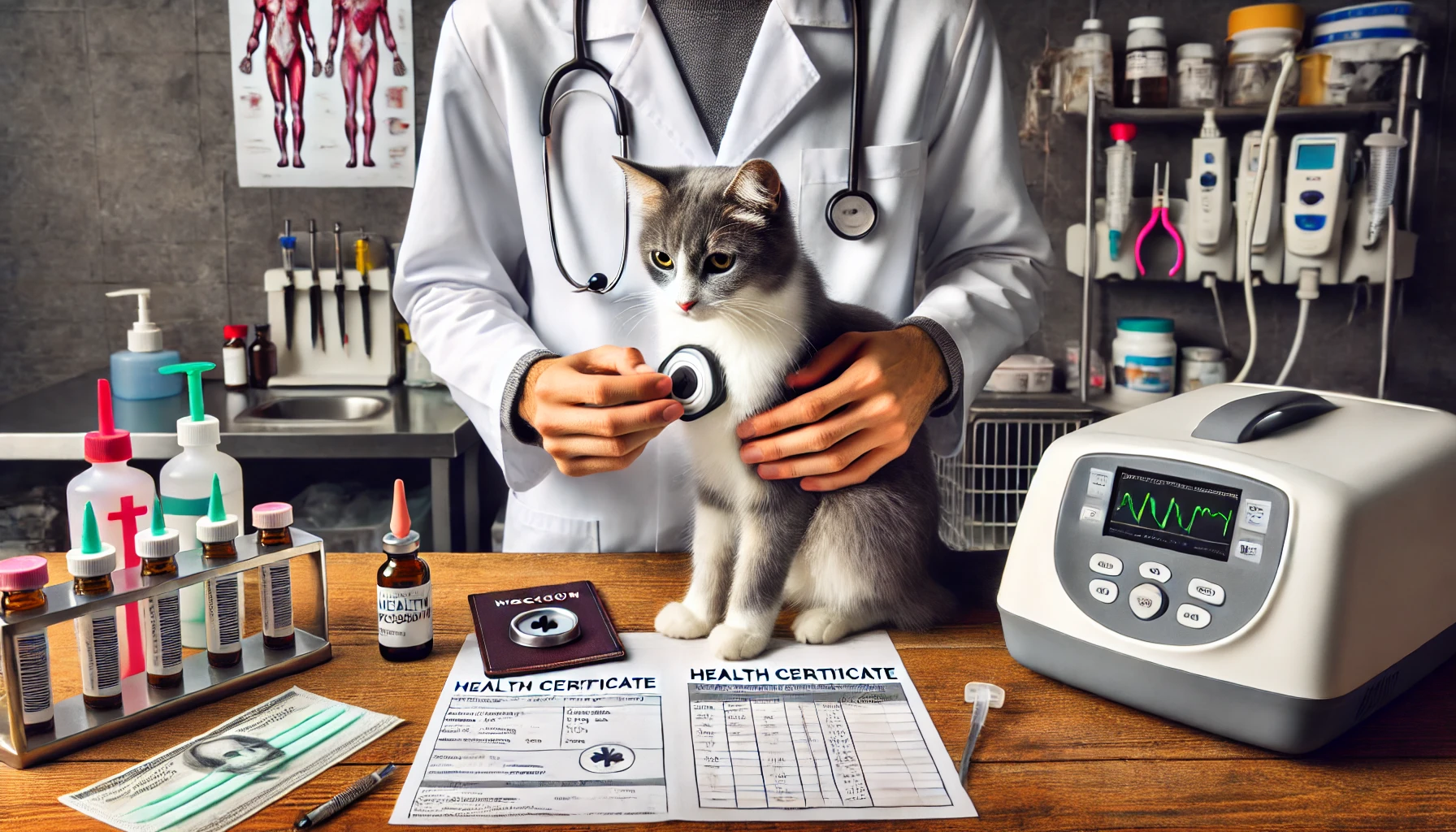
Veterinary Requirements
In addition to basic vaccinations and treatments, many countries have additional veterinary requirements for a pet passport.
These may include blood tests to confirm the effectiveness of rabies vaccinations, inoculations against other diseases, and even flea and tick treatments before departure.
Your vet will advise you based on the country you plan to visit.
Bear in mind that these treatments and tests should be done well in advance, as some of them take time.
For example, rabies titration tests may take several weeks to return results, which could impact your travel plans if done at the last minute.
Getting a pet passport involves visiting an accredited veterinarian who will verify your cat’s health, microchip, and vaccinations. Make sure all requirements are met well in advance to avoid delays.
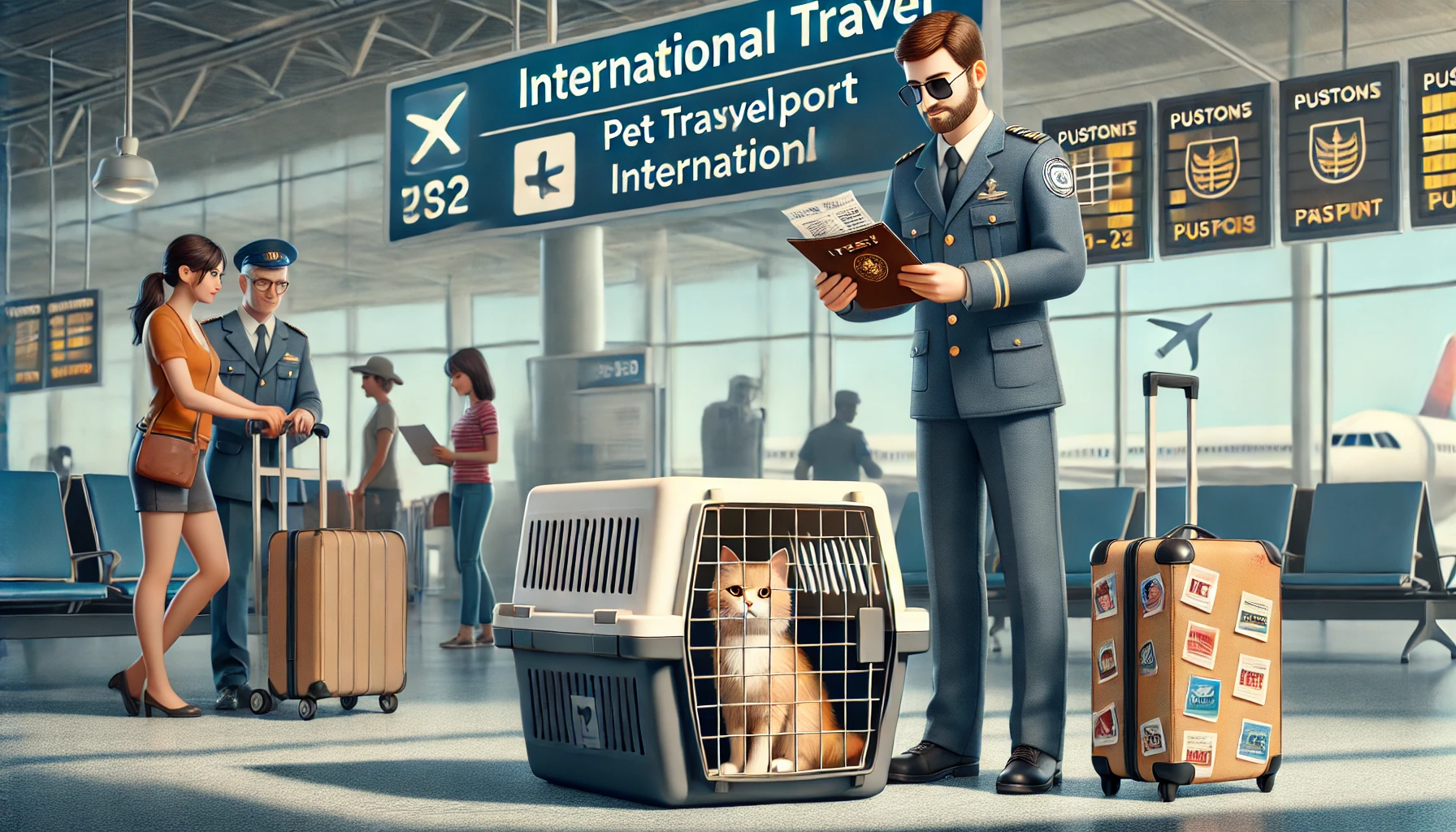
Travel Regulations and Restrictions for Cats
Traveling with your cat outside of your country could involve numerous travel regulations and restrictions.
Most countries have their own laws regarding the admittance of pets, which can include several compulsory requirements.
Failure to comply can lead to fines, quarantine, or denial of entry for your feline companion.
Thorough planning and research in advance of the trip are essential to avoiding complications.
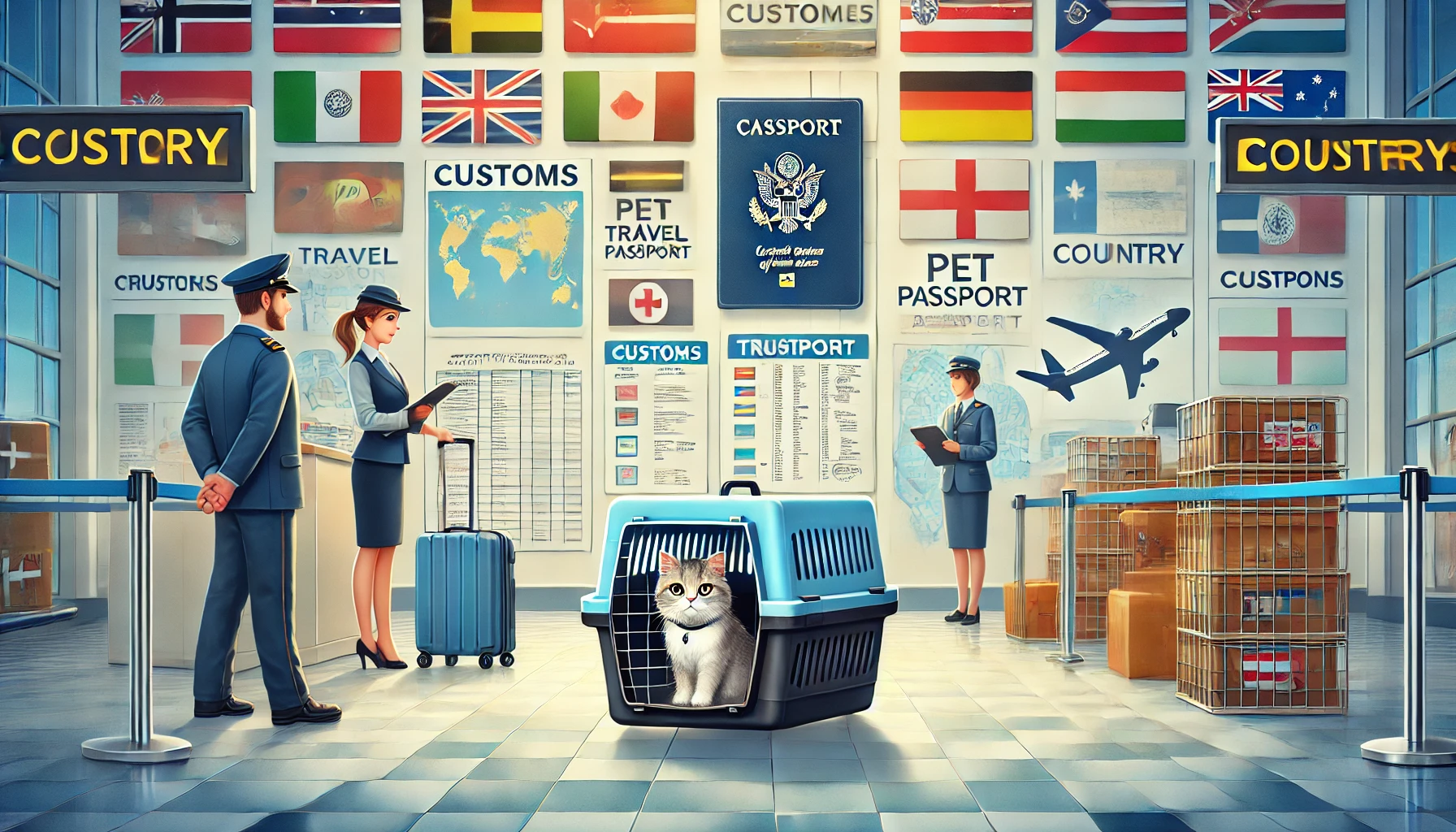
Country-Specific Requirements
Each country has its regulations regarding pets that enter the country.
Some countries, like those in the European Union, require a pet passport with proof of a rabies vaccination and microchip.
In contrast, other countries, like Australia and Japan, have much stricter rules, usually requiring an extended quarantine starting upon arrival.
You must research the detailed rules of the destination country well in advance to make sure your cat meets all the relevant health and documentation requirements.
- European Union: A valid pet passport with proof of rabies vaccination and an ISO-compliant microchip is required. No quarantine is usually required for cats coming from other EU countries.
- United States: Generally, a rabies vaccination certificate is required, but no quarantine period is imposed for cats coming from most countries.
- Australia: Australia has very strict biosecurity rules. Cats need to be rabies tested, health-checked, and quarantined upon their arrival.
- Japan: Japan requires a rabies antibody test along with a quarantine period. A minimum quarantine time of 12 hours is required, though this may extend depending on where you are traveling from.
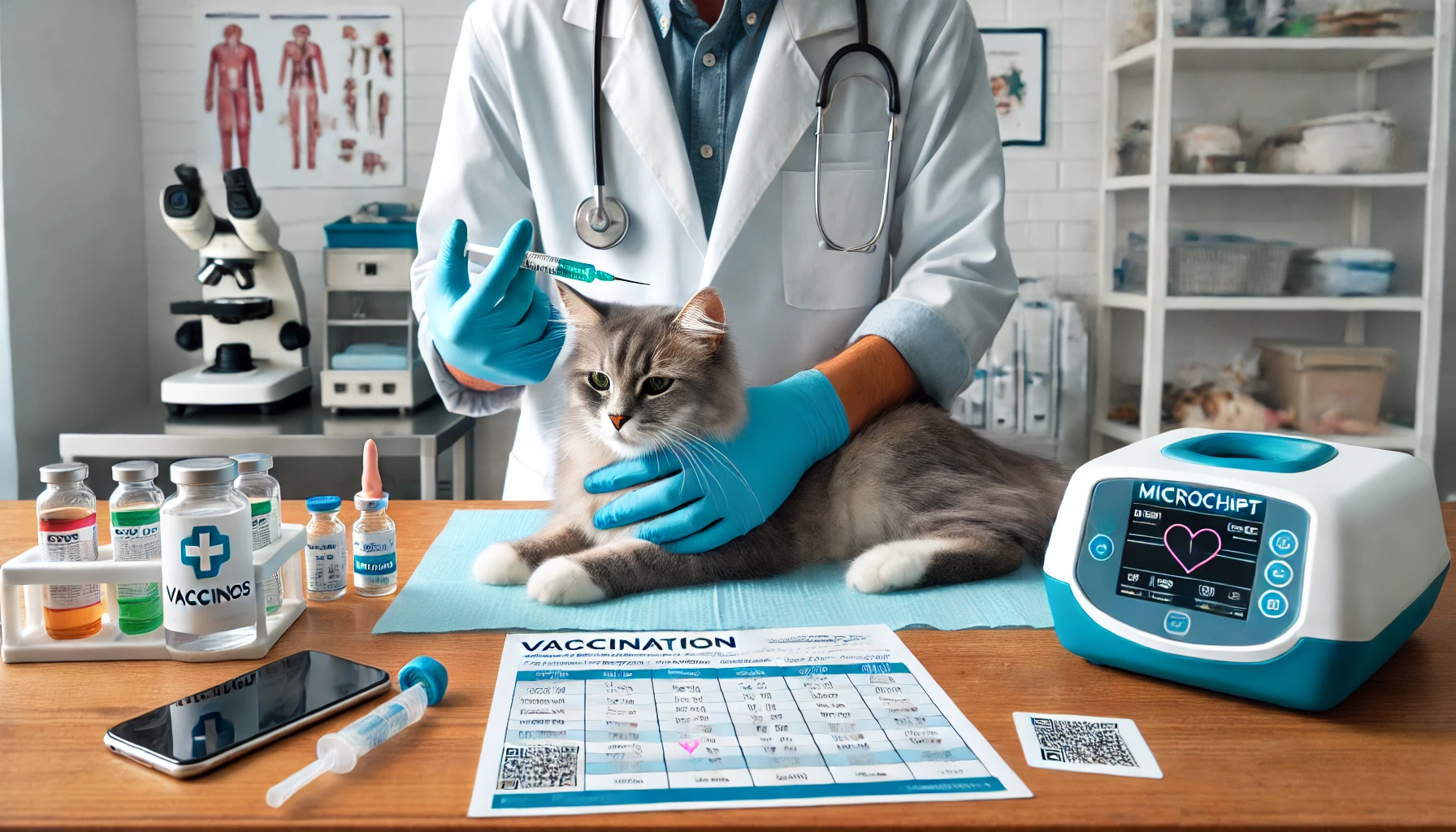
Vaccination and Microchip Policies
Most countries require a valid rabies vaccination after the microchip is implanted for cats.
The rabies vaccine is of particular importance, as many parts of the world have issues with rabies, and authorities want to ensure pets will not become a public health danger.
Vaccination should be done at least 21 days prior to travel and must be indicated in either the pet passport or veterinary health certificate.
The microchip must conform to ISO 11784 or 11785 standards, so it can be scanned internationally.
If your cat doesn’t have an ISO-compliant chip, you can replace it or carry your own scanner; however, this is not always accepted.
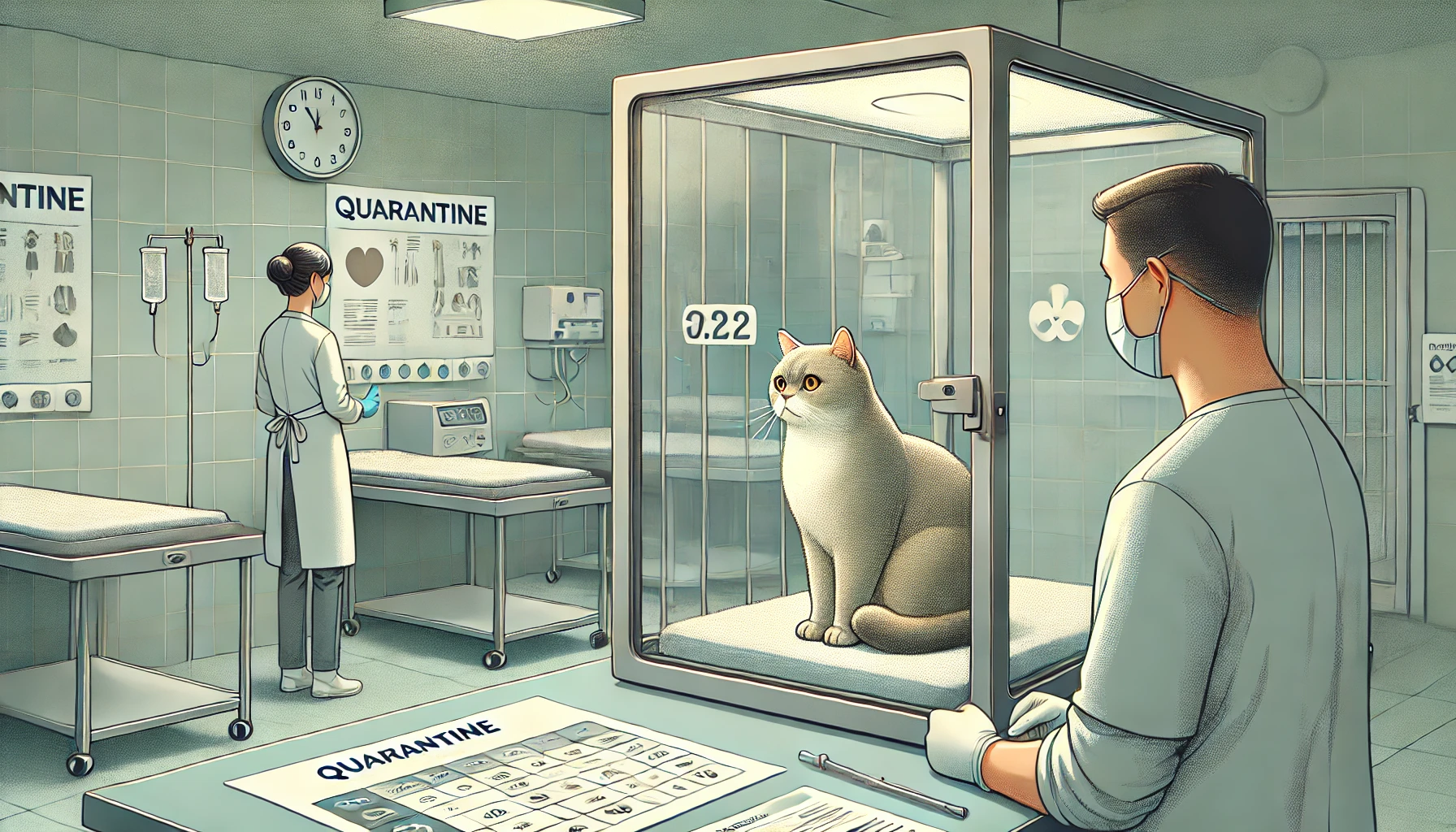
Quarantine Rules
One of the biggest concerns for traveling pet owners is quarantine.
Quarantine is implemented to prevent the spread of diseases like rabies.
Quarantine periods vary depending on your country of origin and your destination, ranging from a few hours to several weeks.
For example, Australia and New Zealand have long quarantine periods, while most European Union countries do not require quarantine if your cat’s paperwork is in order.
- Australia: 10-day quarantine for cats, along with a rabies antibody test and parasite treatment.
- New Zealand: Quarantine periods of up to 10 days can apply depending on the cat’s country of origin and vaccination status.
- United Kingdom: Most pets from EU countries and those on the UK’s approved countries list do not need quarantine if they have a valid pet passport.
It is essential to research quarantine regulations and begin travel preparations in advance.
Some countries allow home quarantine if certain conditions are met, which can be a more comfortable option for your cat.
Each country has specific regulations and restrictions for traveling with pets. Failing to meet these requirements can lead to quarantine or even denial of entry for your cat.
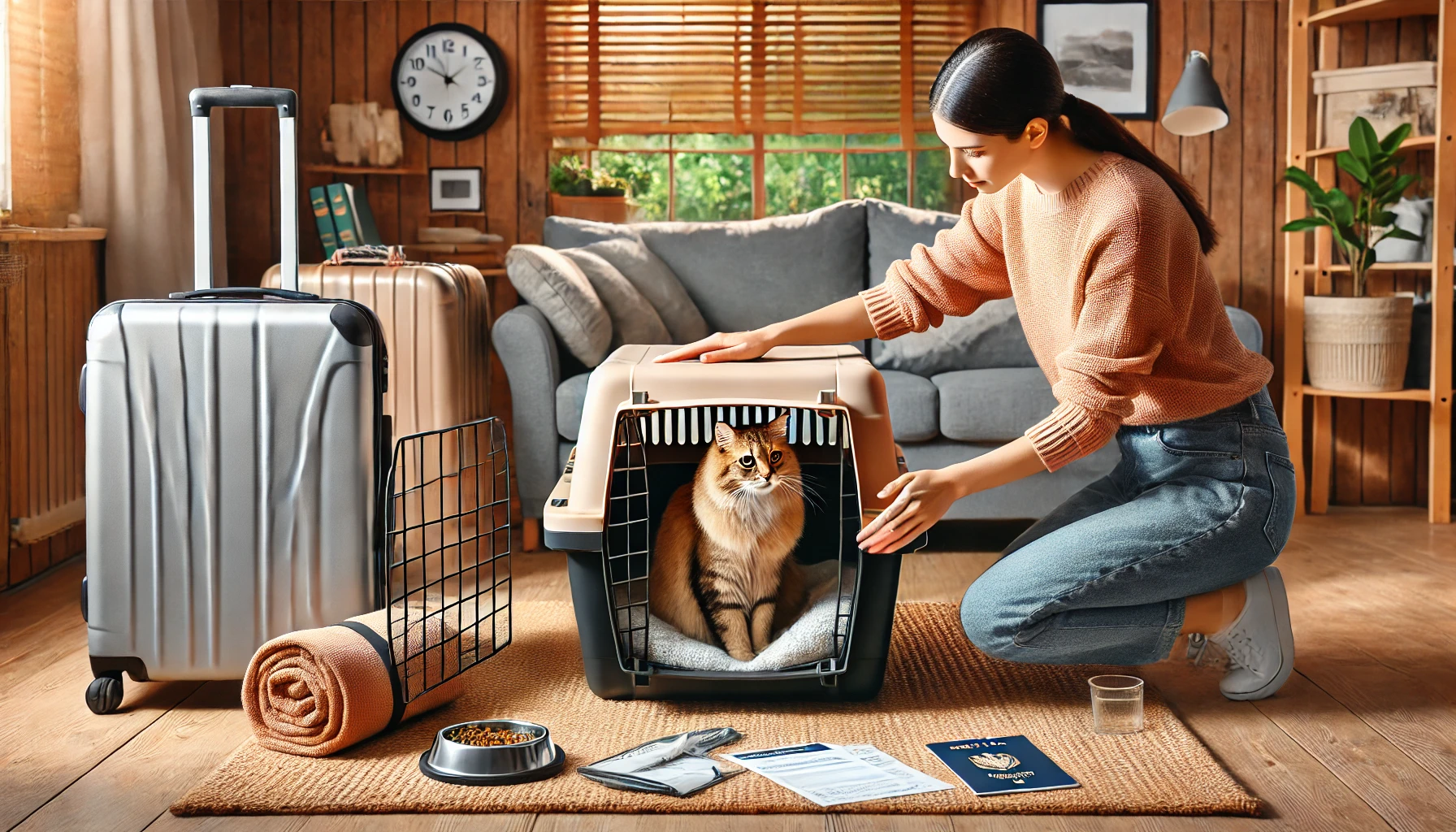
Preparing Your Cat for International Travel
International travel can be stressful for you and your cat.
With proper preparation, however, the journey will be smoother and more comfortable for your feline companion.
Good planning will help ensure that your cat is safe and well cared for during the trip while complying with all necessary regulations regarding the pet passport.
The following steps will help you in preparing your cat for a stress-free international journey.
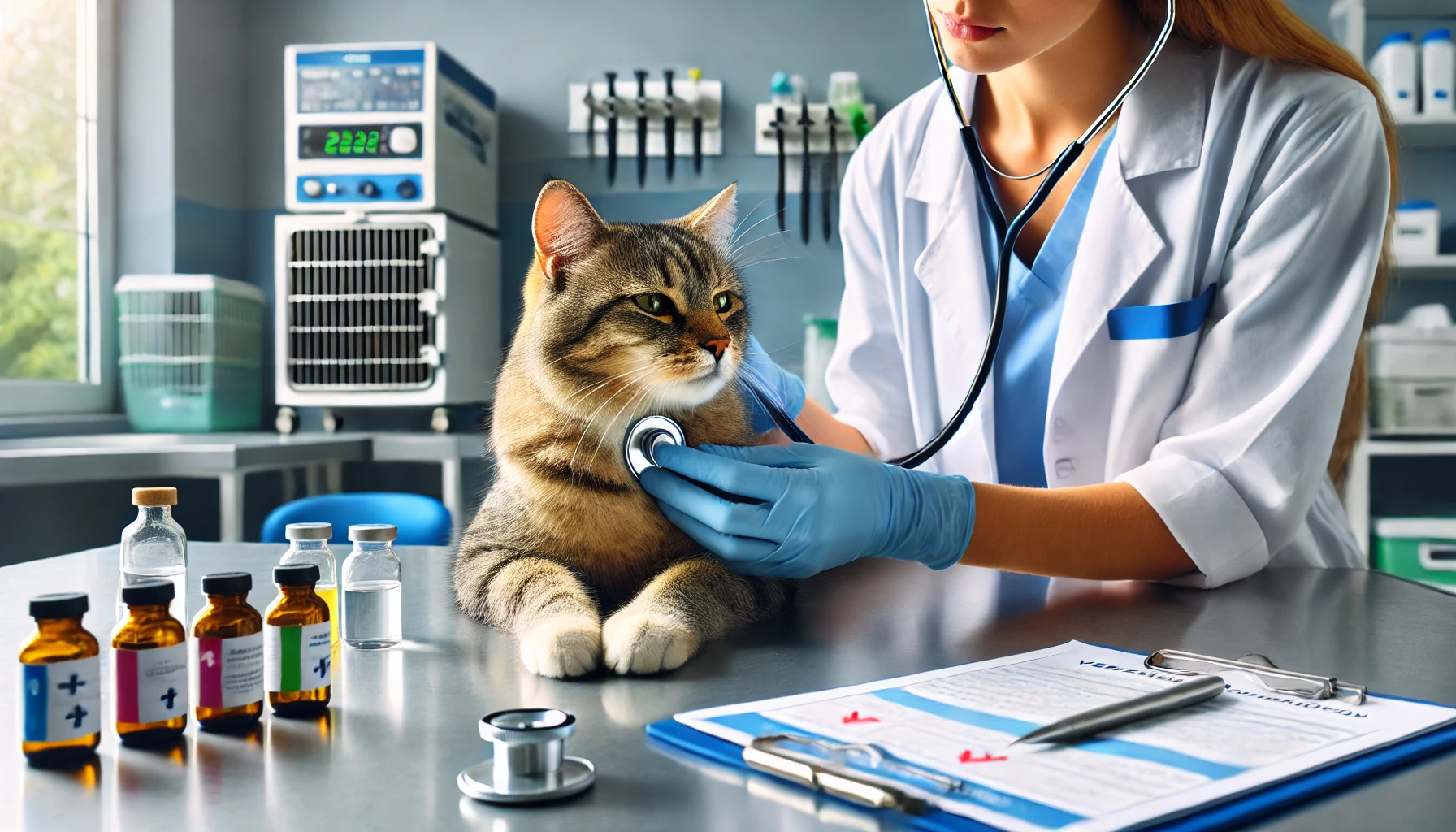
Health Checks and Vaccinations
The most important thing is to ensure your cat is in good health before traveling abroad.
First, schedule an appointment with a veterinarian to check on your cat’s health.
During the visit, your veterinarian will verify your cat’s vaccination history, administer any necessary vaccinations for your destination country, and conduct required health tests, such as blood work or parasite screenings.
- Make sure your cat’s rabies vaccination is up to date, as this is usually a requirement for most countries.
- Consult with your veterinarian about any additional vaccinations or treatments required by specific countries, such as parasite treatments or vaccinations for other infectious diseases.
- If the country requires a health certificate, ensure your vet provides one within the necessary time frame, usually 10-14 days before travel.
Keep all of your cat’s medical records well-organized and easily accessible, as they may be needed at customs or by airline officials.
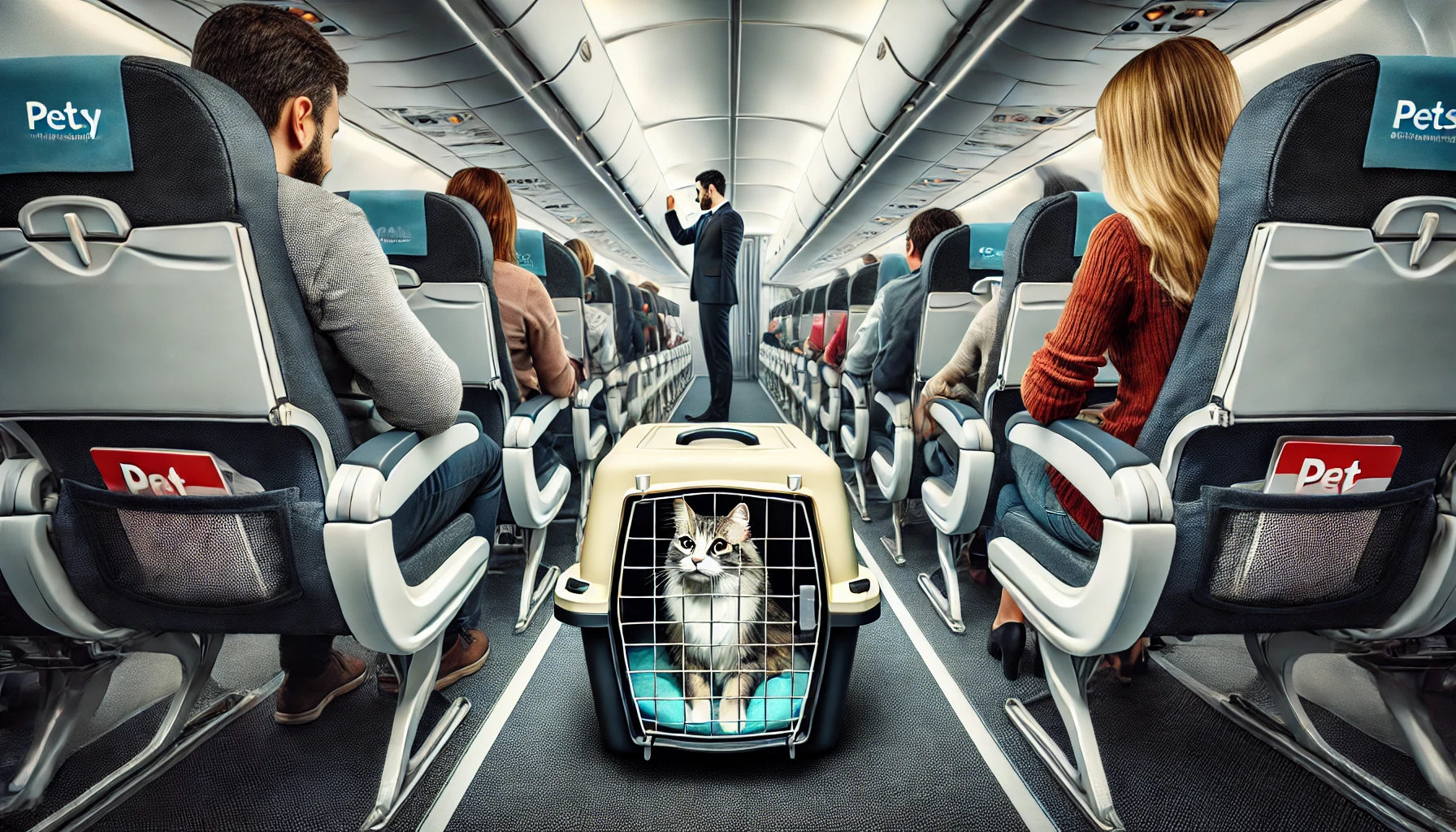
Pet-Friendly Airlines
Not every airline allows pets, and even when they do, requirements can vary for flying with animals.
You should book your flight with a pet-friendly airline that allows cats in the cabin or as checked baggage, depending on the size and weight of your cat.
Here are some key considerations:
- Check the airline’s policies for traveling with cats, whether in the cabin or as cargo.
- Ensure your cat’s travel crate meets the airline’s size, material, and ventilation requirements.
- Confirm with the airline if they require advance notification for traveling with a pet, as some limit the number of animals per flight.
- Check for any specific temperature restrictions the airline may have, as these could impact your travel and layovers.
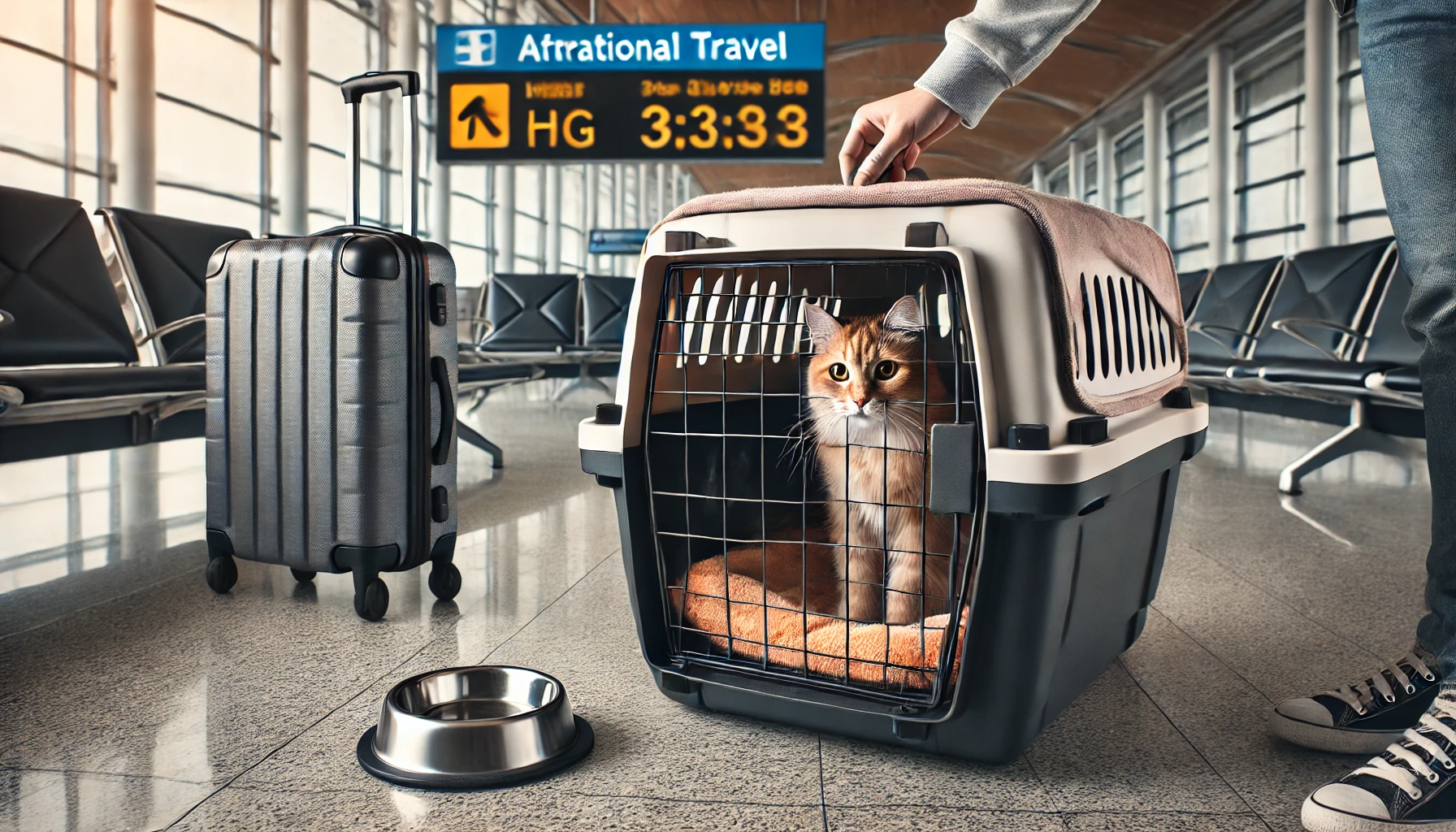
Travel Crate Requirements
The travel crate is a key part of ensuring your cat’s safety and comfort during the journey.
The International Air Transport Association (IATA) sets standards for pet crates, particularly for cats traveling as cargo or checked baggage.
The crate should be well-ventilated, sturdy, and large enough to allow your cat to stand, turn around, and lie down comfortably.
Line the crate with absorbent materials, such as a soft blanket, for extra comfort during the journey.
- A secure locking mechanism to prevent your cat from escaping during transit.
- Ventilation on at least three sides to provide your cat with adequate air.
- A leak-proof bottom to keep the crate clean and dry during transport.
- Clear markings with your contact information in case of an emergency or delay.
Acclimate your cat to the travel crate ahead of time by allowing them to spend time in it before the trip.
This will help reduce their anxiety and make the journey more comfortable.
Prepare your cat for international travel by ensuring their vaccinations are up to date, getting a health certificate from your vet, and researching country-specific requirements for pet travel.
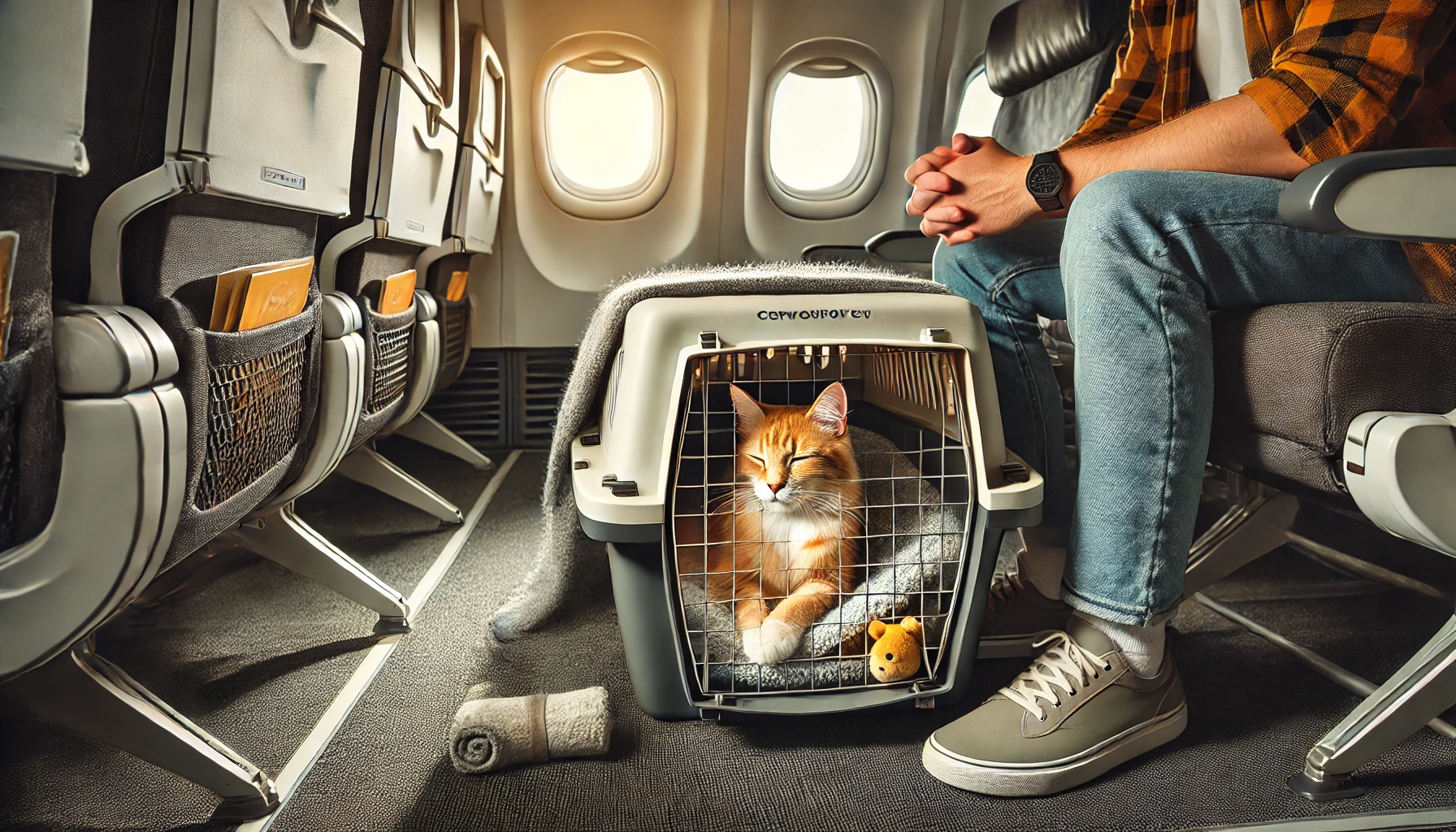
Tips for Stress-Free Travel with Your Cat
Cats are creatures of habit, and new environments can be quite stressful for them.
However, with good preparation and by following some general guidelines, you can help ease your cat’s stress during travel.
Here are some practical tips to help your cat stay calm and safe on the journey.
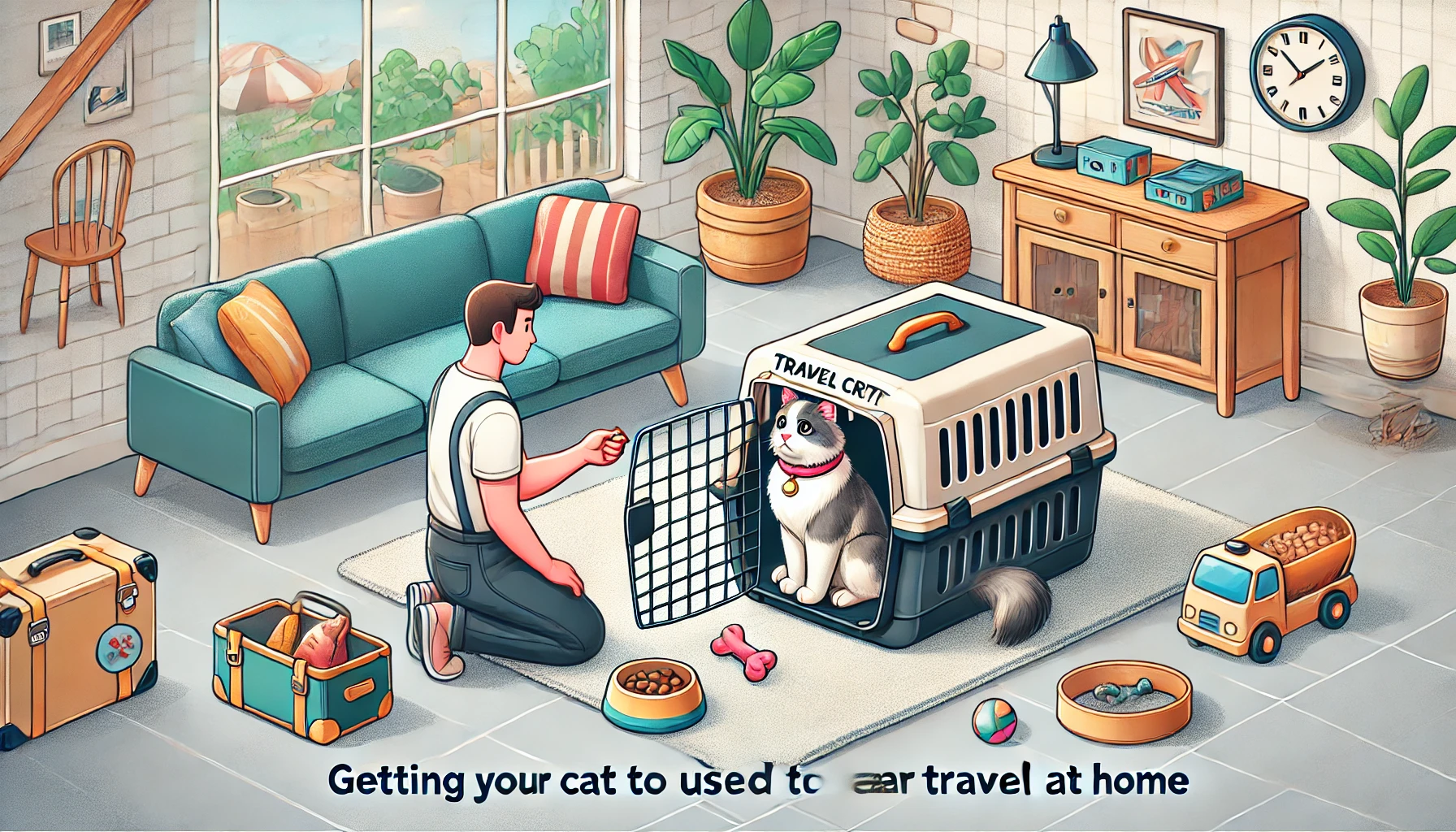
Training Your Cat for Travel
It’s important to start preparing your cat for trips well in advance.
Getting your cat used to the travel crate and new environments will go a long way in reducing anxiety.
Here are steps you can take to help your cat adjust:
- Acclimate your cat to their travel crate by setting it up in a cozy spot in the house and letting them explore it freely. Use treats or toys to create positive associations with the crate.
- Take your cat on short car rides to help them get used to the motion of travel. Gradually increase the duration of the trips to help your cat adjust.
- Play soothing music or use pheromone sprays designed to reduce stress in cats while traveling. These can help maintain a calm atmosphere.
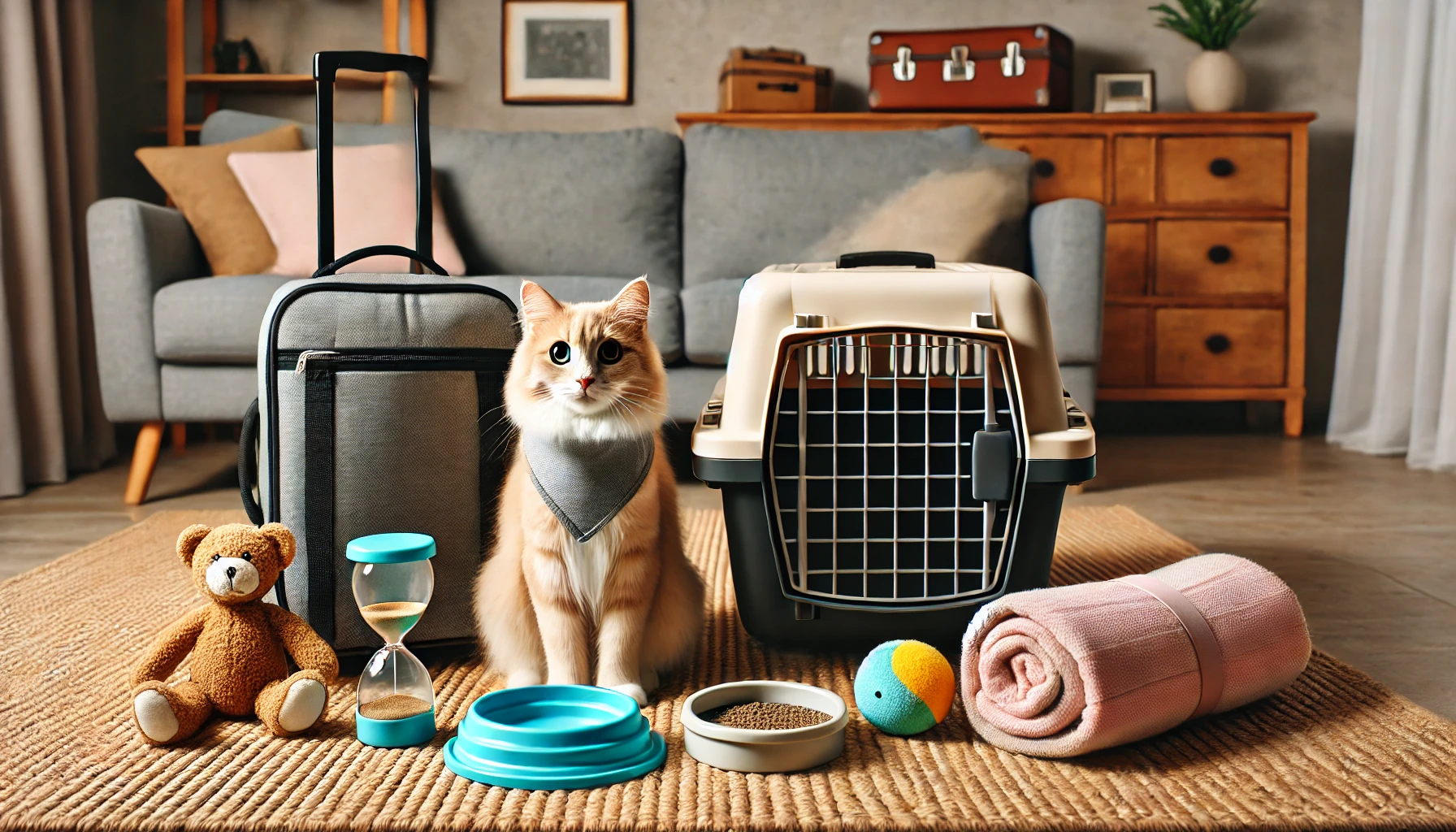
Must-Have Travel Accessories
The accessories you bring with you can make a big difference in your cat’s comfort and calmness during the trip.
Make sure to have everything your cat may need, including the following:
- Portable litter box: A small, travel-sized litter box is especially useful for longer trips or when traveling by car or staying overnight.
- Food and water bowls: Collapsible or travel-friendly bowls make it easier to feed and hydrate your cat on the road. Be sure to pack enough food and water for the journey.
- Comfort items: Bring your cat’s favorite blanket, toy, or an item with your scent to place in the travel crate, offering a sense of comfort and familiarity.
- Medications: If your cat experiences motion sickness or severe anxiety during travel, consult your vet about any medications or calming supplements that can be used during the trip.
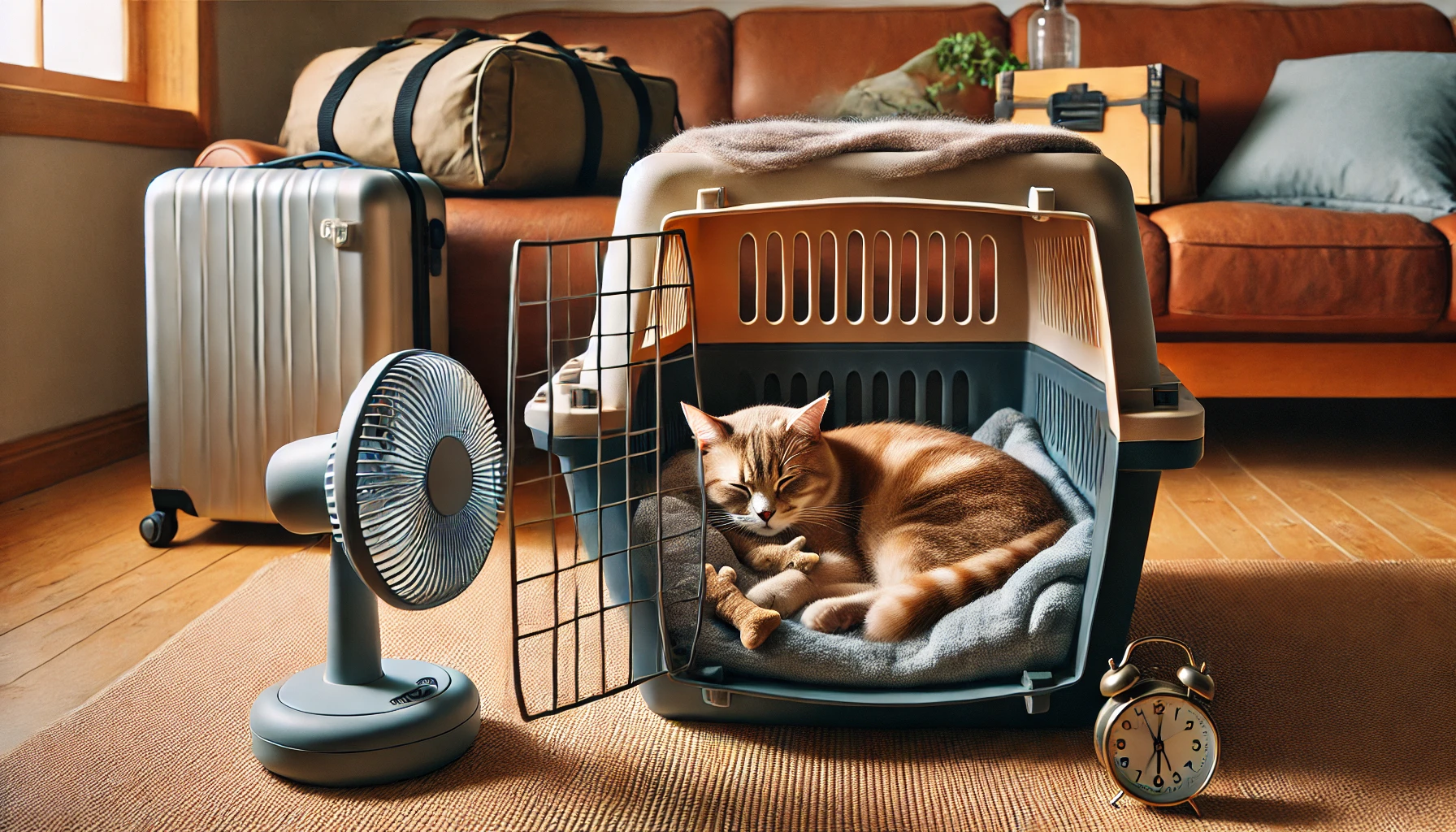
Keeping Your Cat Comfortable
Ensuring your cat’s comfort can make traveling much less stressful for them.
Here are a few additional tips to help keep your cat relaxed:
- Keep the travel crate in a well-ventilated area, away from direct sunlight or extreme temperatures to prevent overheating.
- Minimize disturbances during the journey by avoiding loud noises or sudden movements that could startle your cat.
- Take regular breaks during long drives to give your cat food, water, and a chance to use the litter box.
- Stay calm and patient, as cats can pick up on your emotions. The more composed you remain, the less stressed your cat will be.
These tips will go a long way in making your cat’s travel experience as stress-free as possible—just be sure to dedicate enough time to proper preparation.
Travel can be stressful for cats. Ensure a comfortable journey by bringing essential items like a portable litter box, food, water, and comfort items.
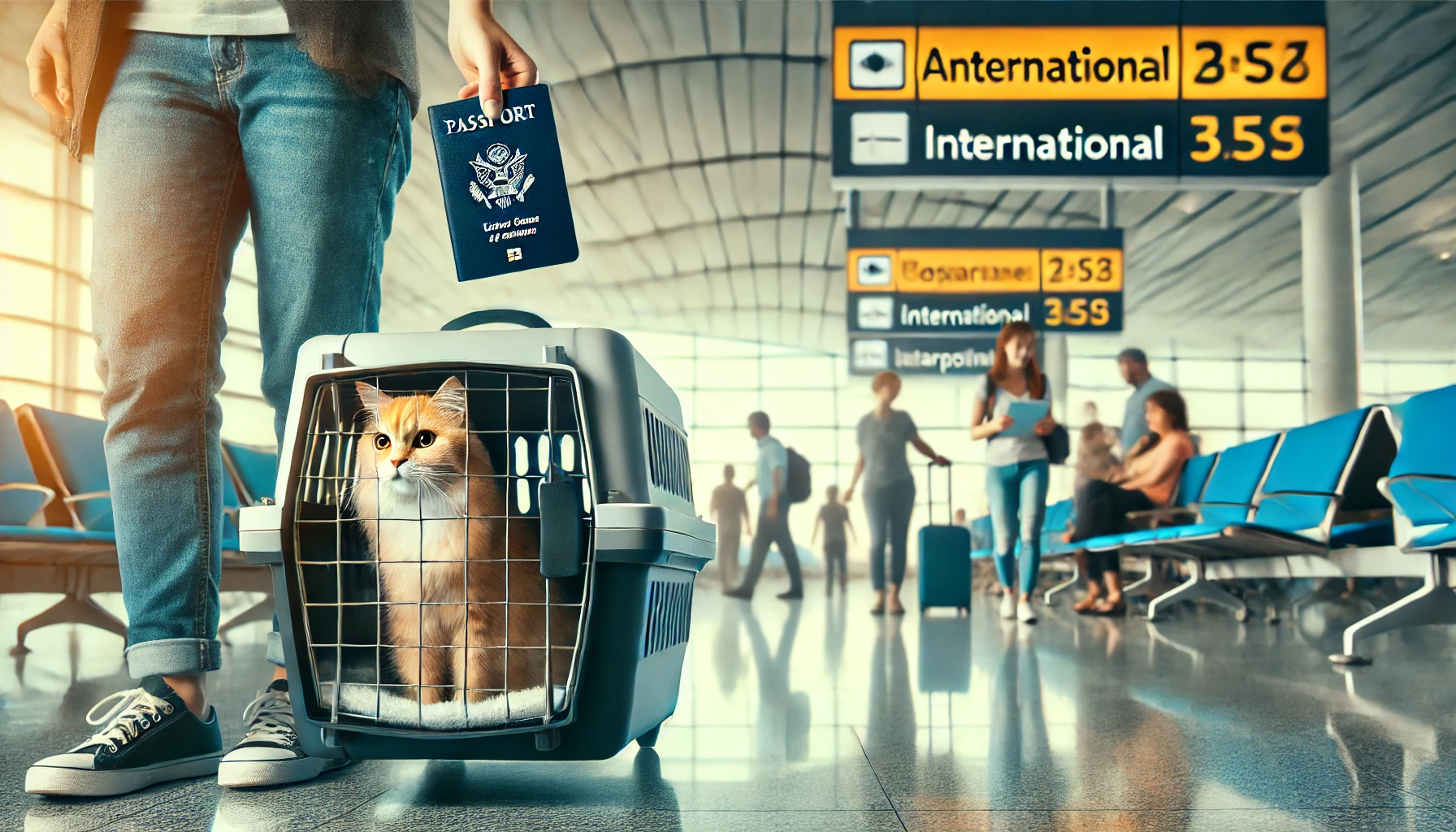
A Smooth Tour with a Cat Pet Passport
International travel with your cat may feel overwhelming the first time, but with proper planning and attention to detail, your journey can be smooth and enjoyable for both you and your feline friend.
A valid pet passport is essential for crossing borders, meeting each country’s regulations, and ensuring your cat’s health and safety during the journey.
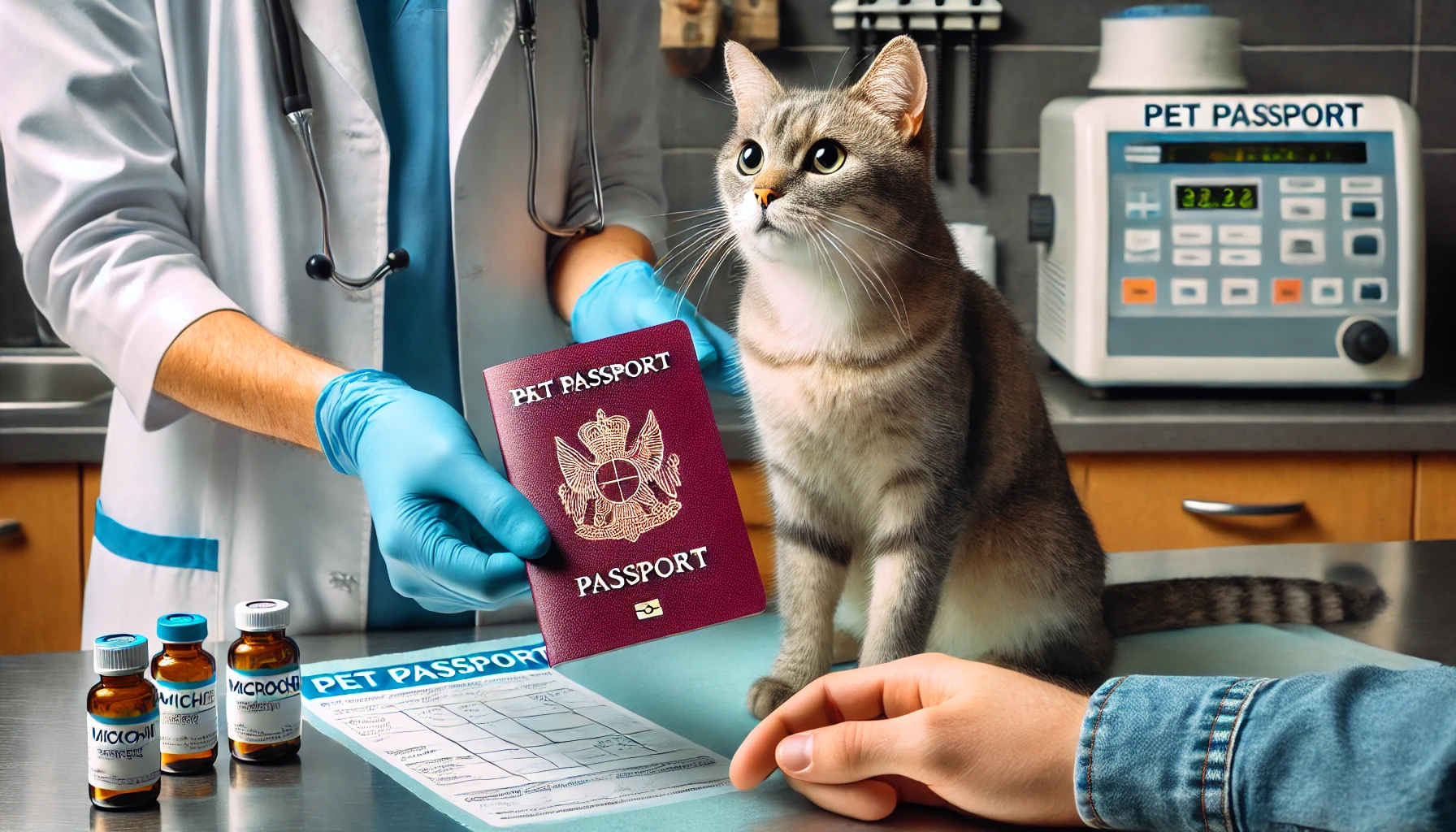
Why a Pet Passport is Such an Important Document
A pet passport is more than just a travel document; it is a record that your cat is healthy and fit to cross international borders.
With a pet passport, you can avoid inconveniences caused by incomplete documentation, such as quarantine detention or fines.
An accredited veterinarian can help you obtain the necessary documents for a pet passport, including your cat’s microchip identification, vaccination records, and any required health certificates.
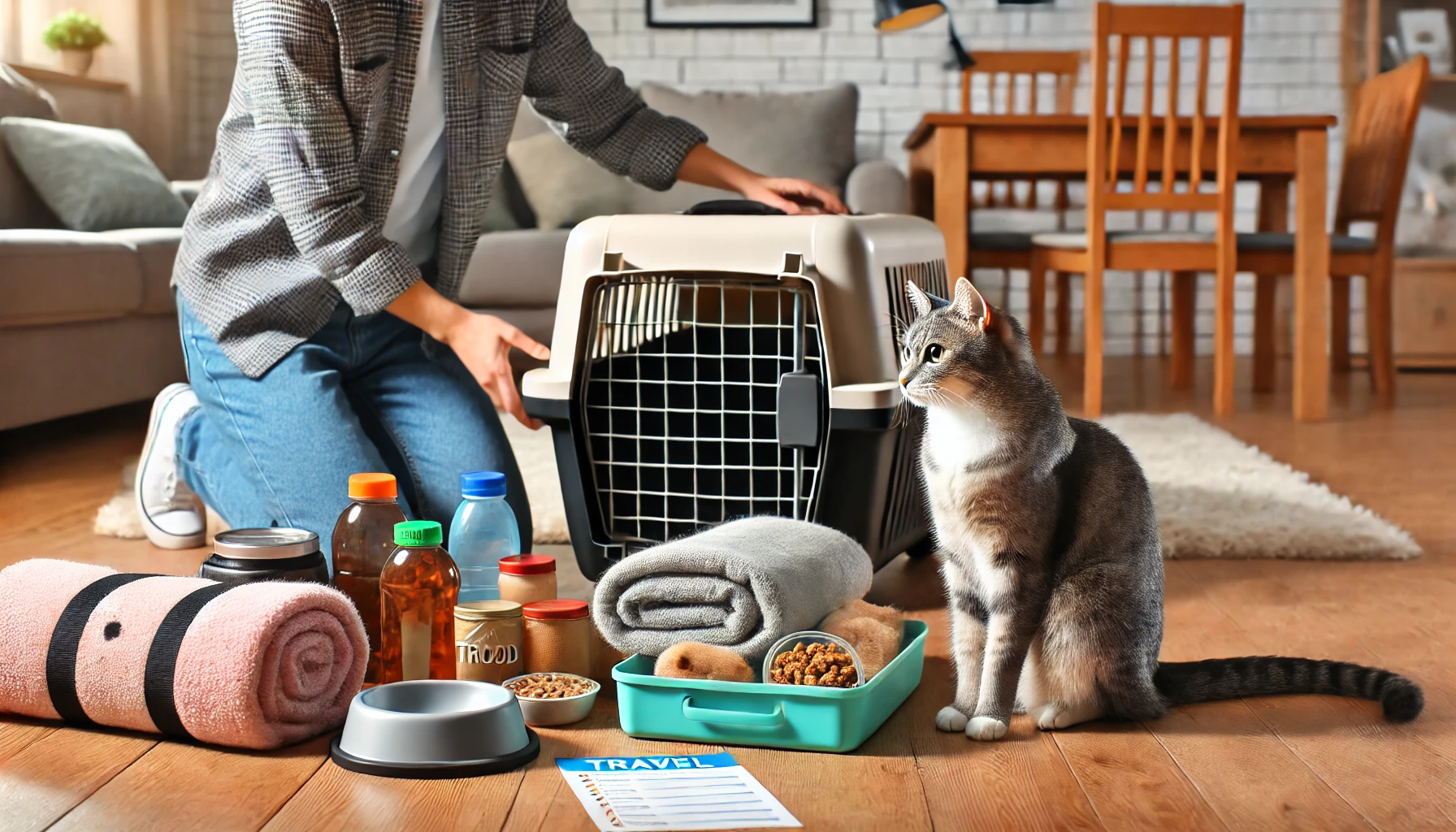
Thorough Preparation for Stress-Free Travel
Thorough preparation is key to ensuring your cat’s travel is stress-free.
This involves acclimating your cat to the travel crate, keeping them healthy with regular vet visits, and following all travel regulations.
Researching country-specific requirements for vaccinations and quarantine rules can also help you plan in advance.
By reducing anxiety before and during travel, you make it easier for your cat to adapt to new environments.
Familiarizing your cat with the travel crate well ahead of time and providing them with personal items will result in less stress during the journey.
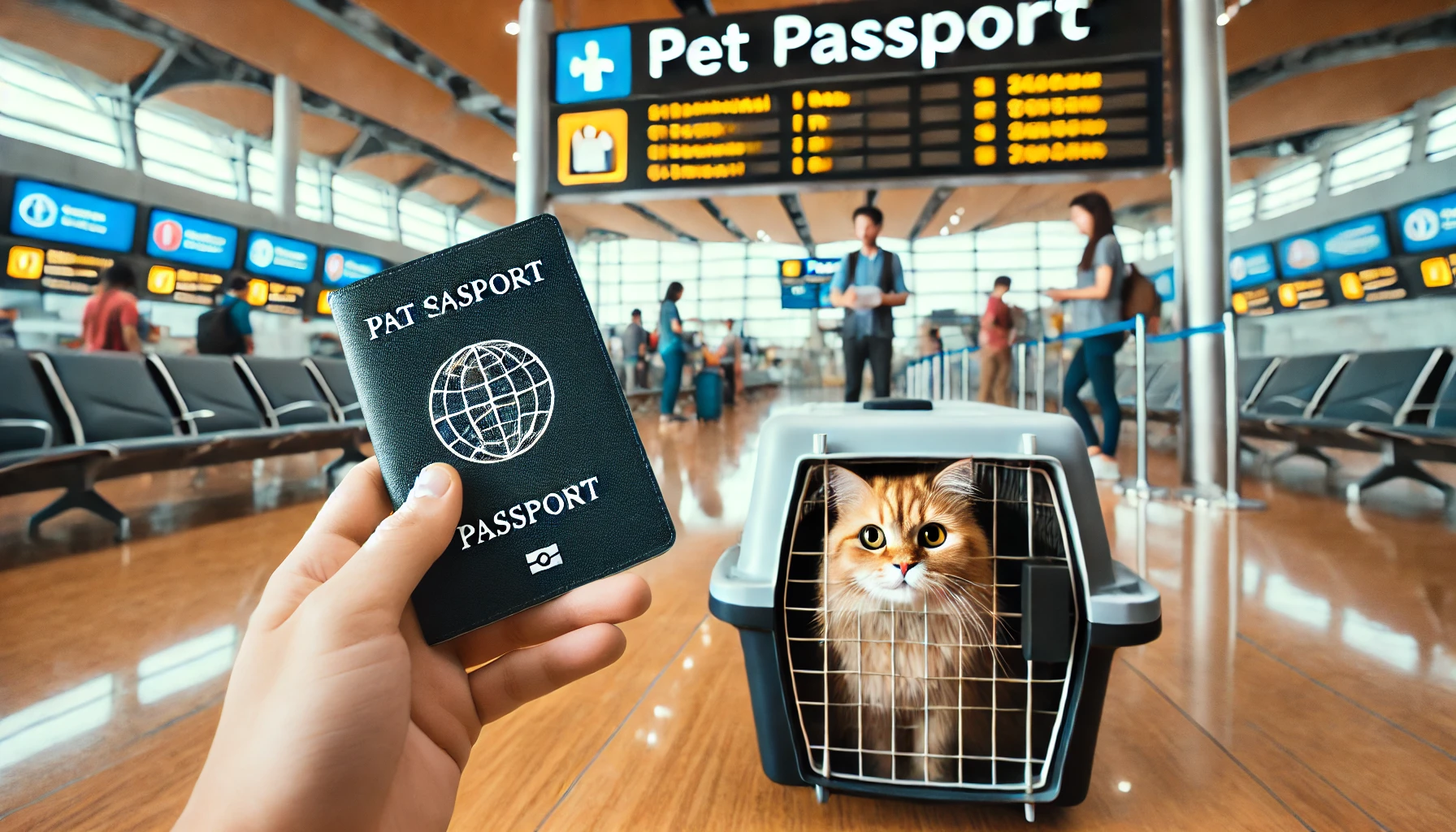
Pet Passport: The Key to Smooth International Travel
Traveling with your cat is a rewarding experience, and a pet passport ensures that your pet can cross international borders safely and legally.
The passport documents your cat’s health and vaccinations, proving compliance with the destination country’s regulations.
Having all the required documents on hand will help you avoid delays or issues at customs, making your journey much smoother.
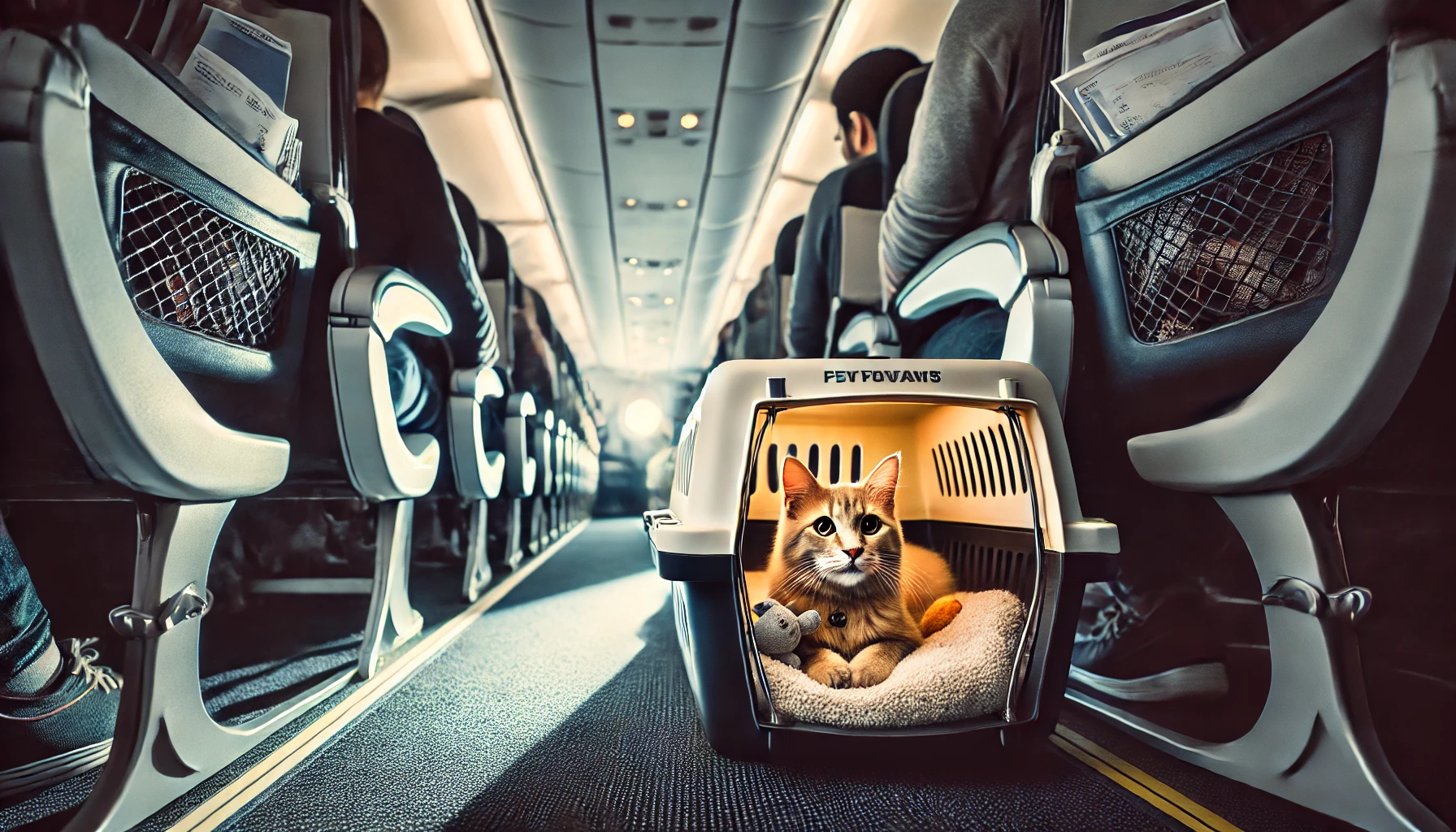
Final Tips for a Safe and Calm Journey
Here are some final tips to help your cat travel safely and remain calm during the trip:
- Make sure your cat is vaccinated against all necessary diseases, especially rabies.
- Bring a portable litter box, collapsible bowls, and comfort items that are familiar to your cat.
- Book your flight with a pet-friendly airline and ensure you meet all requirements for the travel crate.
- During long journeys, take regular breaks to feed your cat, provide water, and offer a chance to use the litter box.
- Stay calm and patient, as your cat will feel reassured by your composure during the trip.
By following these guidelines and being proactive with your planning, you’ll create a seamless and enjoyable experience for both you and your cat.
A pet passport is your ticket to stress-free international travel, ensuring that your feline friend is well-prepared and comfortable throughout the journey.
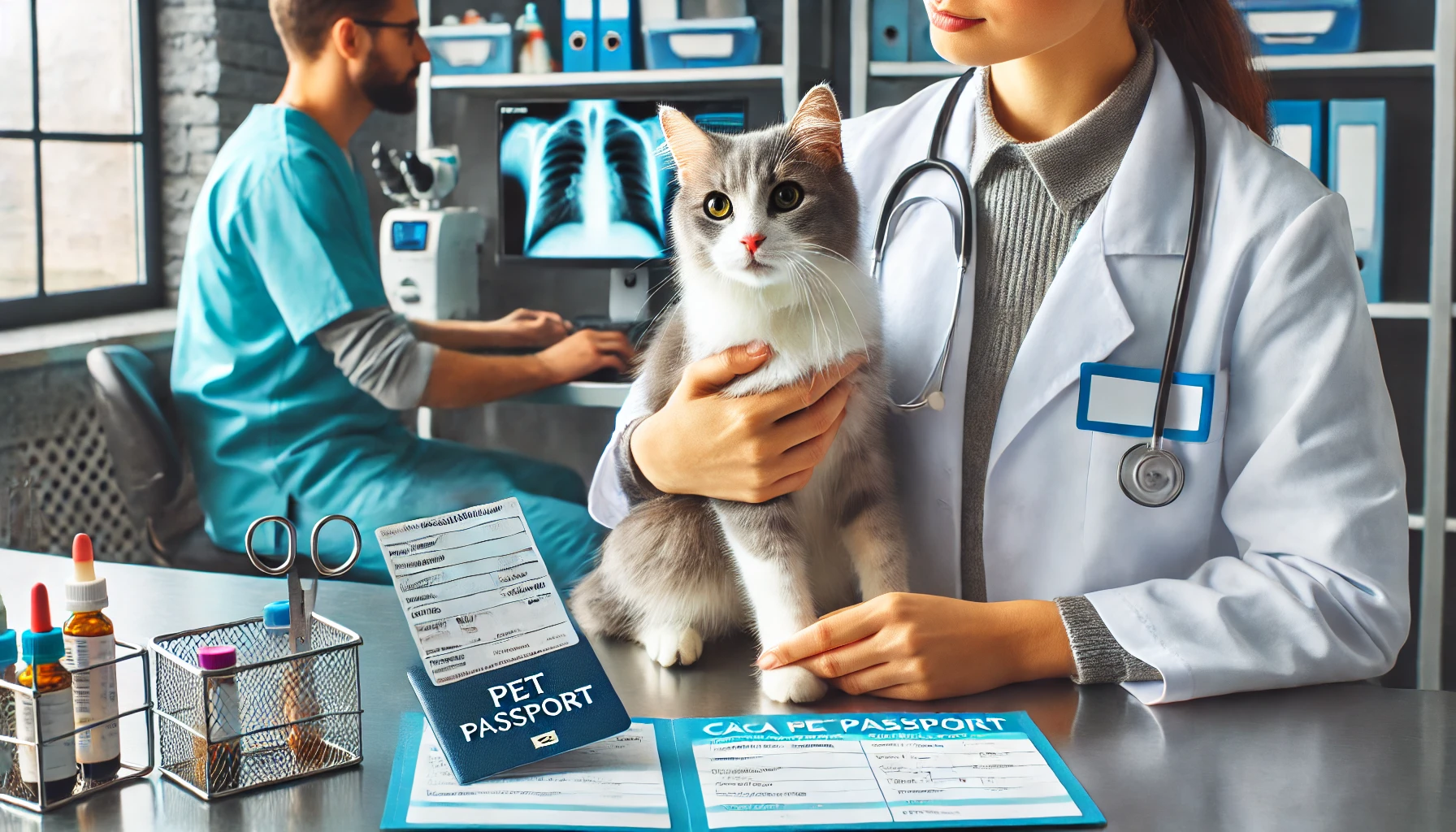
Frequently Asked Questions About Cat Pet Passports
A cat pet passport is necessary for your cat when traveling to another country.
Below are a few of the most frequently asked questions regarding obtaining and using a pet passport for your feline friend.
What is a cat pet passport?
A cat pet passport is the official document that provides necessary data on vaccinations and microchipping, allowing cats to travel across borders based on the rules and regulations of each country.
Where can I obtain a cat pet passport?
You can obtain a cat’s pet passport from an accredited veterinarian.
The vet issues the passport after verifying your cat’s microchip, vaccination record, and overall health status.
Does the cat pet passport require a rabies vaccination?
Yes, most countries require a rabies vaccination to validate a cat pet passport.
The rabies vaccine must be administered after the microchip is implanted and recorded in the pet passport.
How long is the pet passport valid for a cat?
A cat pet passport is valid as long as the required vaccinations and treatments are kept up to date.
It’s essential to follow the vaccination schedule based on your destination country’s regulations.
Must my cat be microchipped to have a pet passport?
Yes, your cat must be microchipped before a pet passport can be issued.
The microchip must be ISO-compliant and readable at all international borders your pet may cross.
Are there any countries that do not accept pet passports?
Yes, countries like Australia and New Zealand have stricter biosecurity measures.
Even with a pet passport, additional documentation such as health certificates and quarantine periods may be required.
Can I travel without a cat pet passport?
No, most countries require a pet passport or its equivalent for cats to cross borders.
Without it, your cat may face quarantine or be denied entry into the destination country.
Do airlines require a pet passport for cats?
Yes, many airlines, especially those offering international flights, require a valid pet passport for cats.
It’s best to verify the airline’s specific requirements before booking your flight.
What happens if my cat’s pet passport is incomplete?
If your cat’s pet passport is incomplete, they may face quarantine, fines, or even be denied entry into the country.
Make sure all vaccinations and documentation are current and complete.

